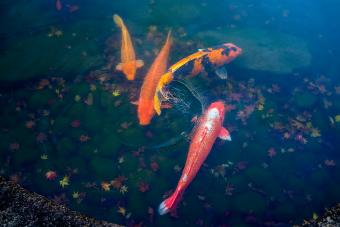
How to keep live plants in an aquarium is an important skill set for new hobbyists. Live plants play a large role in the tank, offer fish a place to hide, and provide food for herbivores. Many fish keepers enjoy adding plants, and a plan for the design is an excellent first step.
How to Keep Live Plants in An Aquarium
When it comes to plant selection, fish always influence the choice. There are easy ways to ensure live plants thrive in a tank. Hobbyists need a plan, patience, and skills to understand how to keep live plants healthy. For example, bushy plants are excellent for nervous fish. Hobbyists benefit from a strategic plan and some thought before placing plants in the tank. Live flora and greenery are not as easy as plastic plants.
Hobbyists Need a Plan
When deciding the types of live plants, you need to consider the fish in the tank. A healthy tank environment only works if the fish enjoy the plants as much as you do! One or two eye-catching shrubs are tremendous, and the others need to provide a place for fish to hide. All live plants require certain nutrients, which is why many new hobbyists opt for plastic accessories! Yet live plants give the landscape a natural look.
Establish New Live Plants
Return any new plants to water right away and never let cuttings dry out. Rooted substrate plants are lovely and establish quickly.
- Some substrate plants are sold as bunches of cuttings and need to be placed individually.
- Other plants are available as swollen stems, and these tubers may be buried partially in the substrate.
- You may cut rhizomes into slices, and each establishes a deep root.
Time to Place Plants
Be creative and fill the tank with water in two stages. Before "planting," fill the tank until it is one-third to one-half full. Always fill the tank at about average aquarium temperature and not extremely cold or hot water. After the plants are in the final spots, fill the tank to the top.
Unplanted Plants
The general rule of thumb is to loosely anchor java moss or java fern to objects with thread or rubber bands, not planted in the gravel. Floating plants are also not planted. Don't allow floating greenery to block light from others.
Bunch Plants
Never plant the bunch the way it comes from the store. The stems are held together with a metal strip or rubber bands. If left this way, the plants rot. Separate each plant individually about one-quarter to one-half inch apart.
Rooted Plants
Grab the rooted plant at the crown and gently depress it into the gravel a few inches from where you want to place it. The crown needs to be at the correct planting level. This method helps spread the roots, and adequate lighting is essential.
Care and Maintenance
Pet parents may need to treat the fish tank plants and aquascape like a garden as it takes a while for the environment to flourish.
How to Keep Live Plants Healthy
Patience and care are necessary to establish a well-planted tank. Nutrients are critical for growth, and there are many ways to keep plants healthy. Plants obtain nutrients from the water in the aquarium. Many hobbyists also use high-intensity lighting, special substrate fertilizers, bottom heaters, mineral supplements, and carbon dioxide supplementation. The plant species require different conditions. Hobbyists need to read the instructions carefully.
- Don't overstock your tank as over planting causes disease.
- Check each plant's requirement to determine aquarium lighting levels.
- The temperature for the plants needs to reflect the temperature your fish need.
- Start with simple plants as some are easier to grow than others.
Research and Plan for Live Plants
Plants are an excellent food source, and live plant varieties make a pleasant environment for all fish. The type of plant species dictates the way it needs to be planted in the tank and the overall maintenance. Hobbyists need a plan before establishing and planting the aquascape. Fish keepers who start with easy live plants set the tank up for success.







